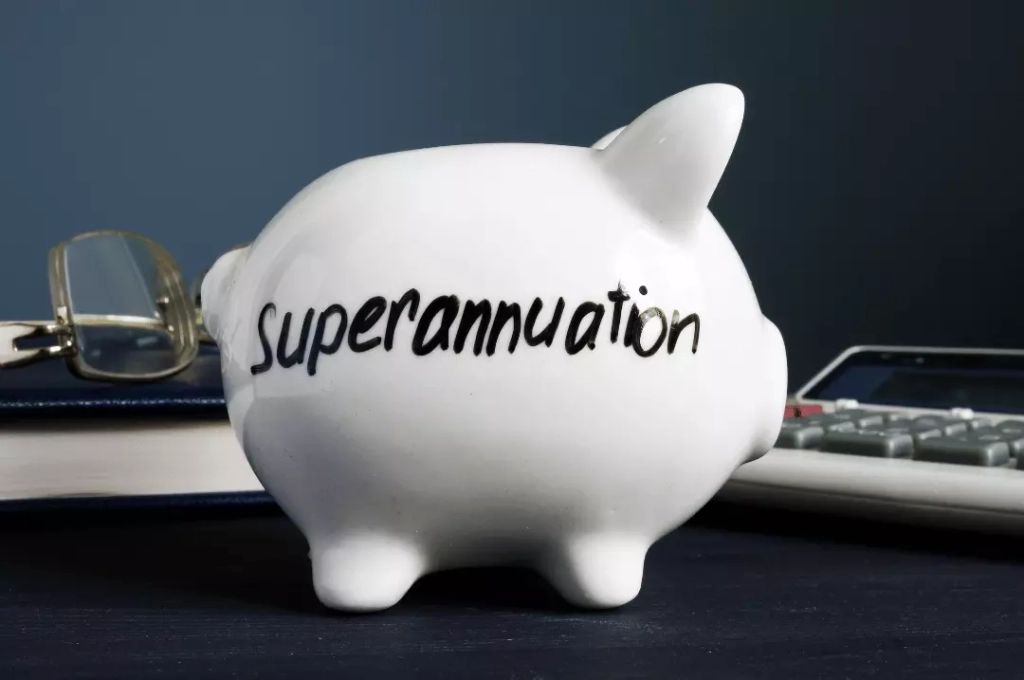How much super can I withdraw after 60?
Table of Contents
ToggleAre you turning 60 soon? Congratulations – you’ve reached an auspicious milestone! It’s also a great time to take stock of your finances and plan for the rest of your retirement years. To make this easier, it’s important to understand how much superannuation money you can withdraw after 60.
Superannuation is the cornerstone of most Australians’ retirement savings plans – getting clear on what you have access to now could be key to having financial peace-of-mind in the future.
In this post, we’ll look at some tips and strategies that will help maximise your access to superannuation funds over the course of your retirement. Read on for more information about how much super money can be taken out after turning 60.
Overview of superannuation rules in Australia
In Australia, superannuation serves as a vital and comprehensive financial system designed to assist individuals in securing a comfortable retirement. This robust arrangement establishes a compulsory framework where employers make contributions to their employees’ chosen super funds as part of the Superannuation Guarantee (SG).
Navigating the intricacies of the superannuation rules can be daunting, but taking the time to explore its components can have substantial long-term benefits. Noteworthy aspects include the concessional contributions and non-concessional contributions, which are subject to annual caps, and tax incentives that encourage individuals to actively grow their retirement savings. Moreover, the Australian government provides further support through the co-contribution scheme and the low-income super tax offset.
With the pension age gradually increasing, understanding and following the superannuation rules is increasingly crucial in building a secure and prosperous financial future for all Australians.
Rules and eligibility requirements for withdrawing super after age 60
Navigating the intricacies of withdrawing superannuation funds after reaching the age of 60 can be a daunting process; however, understanding the rules and eligibility requirements can help ease this transition into retirement.
Though turning 60 grants additional access to your super, specific conditions must be met to ensure a smooth withdrawal process.
- Reaching the preservation age, which varies depending on your date of birth.
- Meeting a condition of release such as retirement, transitioning to a part-time job, or experiencing financial hardship.
- Accessing your super also differs based on whether you opt for a lump sum withdrawal or prefer regular income stream payments.
Familiarising yourself with these essential requirements and rules is vital for ensuring your financial stability and security during your golden years, paving the way for a stress-free and enjoyable retirement.
What type of super funds are eligible for withdrawal at age 60
An individual’s eligibility to access super funds is mainly determined by their preservation age and retirement status. However, in order to evaluate your eligibility for withdrawal, it is essential to familiarise yourself with the two predominant super fund types – accumulation and defined benefit funds.
Accumulation funds, the most common type, involve the growth of your retirement balance through contributions and investment earnings over time; the total can be withdrawn at age 60 once you’ve met the necessary criteria. Defined benefit funds, although less common today, provide a guaranteed income stream upon retirement, calculated using predetermined factors, such as your salary and years of service.
Each fund type operates subject to specific regulations and requirements, so it is crucial to seek professional advice to fully understand the nuances and identify which type best suits your retirement objectives.

How much super can I withdraw after 60?
After turning 60 years old in Australia, individuals are eligible to apply for the Age Pension which is provided through the Australian government. An important aspect of this process is the ability to withdraw super that has accumulated throughout your active working life.
Depending on the type of fund and other personal factors like your age, you may be able to access up to $300,000 from your accumulated super folder. It is possible that a person could use the withdrawn funds for any purpose they’d like, however this could affect their eligibility for assistance under the Centrelink age pension schemes.
Regardless, it is always best to consult with an experienced financial advisor about potential withdrawal plans before moving forward with any major decisions. Taking advantage of what is available after 60 can be a great way to secure your retirement and enjoy some extra comfort during this time of rest from work commitments.
When can you access your super?
Accessing your superannuation is generally restricted until you reach the age of preservation, which is typically between 55 and 60 depending on when you were born. Before that time, you can apply for early release somewhat flexibly, depending on certain adverse situations such as severe financial hardship or permanent disability. You can also withdraw funds from your account in limited amounts in cases of specific family law circumstances.
While some funds offer optional benefits such as a transition to retirement, it’s important to remember superannuation usually has to stay in place in order to be ready for when you eventually access it at the preservation age.
Taking the time to research and understand precisely when and how you can access your super can help ensure a cost effective and smooth transition down the track.
How does transition-to-retirement work?
Are you nearing retirement age but not sure if cutting back your working hours is financially sound? If so and you’d like to continue full-time work while bolstering your superannuation, yet can’t spare the necessary funds for additional contributions—have no fear! We have a solution for that.
Assistance may possibly be accessible in either situation through utilising a superannuation transition-to-retirement pension or income stream (TTR). This plan can be employed to the following:
- Maximising your retirement income by working fewer hours and investing in a TTR pension through your superannuation.
- By salary sacrificing a part of your income into super, you can save yourself money on taxes and draw income from the funds through a TTR pension. You could even maintain your full-time job while doing this. This is an efficient way to stockpile wealth for retirement without losing out on current earnings!
Am I eligible?
If you’ve achieved the age of preservation and are still employed, you’re all set. The exact age for preservation fluctuates depending on your date of birth – it ranges from 55 to 60 years old.
You must also be a member of an accumulation fund, not a defined benefit fund. Only about 10% of Australians are members of defined benefit funds, which tend to be public sector or older corporate funds.
What are the advantages?
TTR pensions have always been a popular asset due to their tax-efficient status. Even after the taxation legislation adjustments in recent years, they remain advantageous for many individuals; however, some of the charm has been lost.
Important things to know: Starting on 1 July 2017, the investments that underpin a TTR pension are taxed at a rate of up to 15%, identical to those in an accumulation account. However, if you’re over 65 years old, then these earnings remain tax free.
For those of you who are 60 or older, rest assured that your TTR pension income will be tax-free. However, if you are under the age of sixty years old, then only a portion of your payments will be taxable and assessed at the marginal rate—with an added 15% tax rebate!
Even with your individual situation, Transition to Retirement (TTR) pensions still offer a myriad of benefits. With TTR pensions you can:
- Make a gradual transition into retirement by cutting down on your hours while maintaining the same income level and comfortable way of life.
- Maximise your retirement savings by contributing to (or having your employer contribute to) a super accumulation account.
- Enjoy receiving tax-free pension payments, if you are aged over 60.
- Take advantage of tax savings and maximise your super by using salary sacrifice or voluntary contributions, no matter if you’re a full-time worker.
By salary sacrificing or making voluntary concessional contributions into super, you can take advantage of a lower tax rate of 15% up to an annual cap of $27,500. This is especially advantageous for those aged over 60 with a marginal tax rate greater than 15%, as well as anyone hoping to amplify their super balance. Before July 1 2021 the concessional Cap was previously set at $25,000- so now’s your chance!
For example:
Olivia, at age 59 and earning a yearly salary of $100,000 (including the Medicare Levy), is taxed with an amount of 34.5%. With her current super balance being around $200,000, she aims to keep up full-time employment until 65 while searching for ways to increase retirement savings without having any extra cash on hand. Taking advantage of the transition-to-retirement strategy appears as a viable solution for Olivia in this circumstance.
Her employer’s Super Guarantee contribution is currently set at 10.5%, allowing her to salary sacrifice up to $17,000 and not exceed the concessional (pre-tax) super contributions cap of $27,500 annually. Not only does this decrease her income tax rate since these types of payments are taxed 15% rather than by 34.5% marginal tax rate, but it also lowers how much she gets paid out each month.
To bridge the gap, Olivia moves $200,000 from her super accumulation account into a TTR pension account. Based on regulations, she must withdraw between 2% ($4,000) and 10% ($20,000) annually. (It is important to note that due to financial repercussions of COVID-19 pandemic, the minimum drawdown has been decreased temporarily by half until 1st July 2023). In order for Olivia to sustain her current payout amount each year; she takes out about eleven thousand dollars yearly.
Although Olivia has not yet reached the age of 60, she is still able to benefit from a 15% rebate on her TTR pension as it is subject to taxation. This contributes to an overall tax saving and significant growth in her retirement fund. Upon reaching sixty, Olivia will be even more privileged when availing of the same: Her tax savings along with the swell in superannuation will increase substantially!
Disclaimer: Everyone’s TTR calculation will vary depending on age, income, super balance, marginal tax rate and returns from their investments. For the purpose of this example we have assumed an investment return of 7.5% annually. Keep in mind these are only estimated figures!
What are the drawbacks?
Although the financial benefits of a TTR strategy will be slight prior to turning 60, it is essential to take into account several key points.
- For individuals in the age range of 55–59, taxable components of their TTR pension will be taxed at a rate that is 15% lower than the marginal tax rate.
- Withdrawing an excessive amount of your super funds during the transition to retirement phase can drastically reduce the total available funds you have when it’s time to retire.
- If you or your partner currently receive any type of social security benefits, it is important to consider how a TTR pension could impact those entitlements.
- To ensure that you are always covered, your fund will require a minimum balance to remain in your accumulation account.
- Low- and high-income earners should carefully consider whether the tax savings (and super boost) offered by salary sacrifice or voluntary contributions into super is worthwhile for their financial situation, as demonstrated in the example below.
For those who earn an income that puts them in a marginal tax bracket of 19% or below, the savings from utilising a TTR strategy are likely to be minimal.
Consider Oliver, who is earning $35,000 and can manage to set aside $5,000 a year into superannuation. In this case he would save 4% tax (which is the difference between his marginal rate of 19% and 15%), amounting to only $200. However, it might be more beneficial for him to combine salary sacrifice with an after-tax contribution of $1,000 as then he will receive the maximum government co-contribution which adds up an extra bulk sum of money ($500) in his pocket!
For those with higher income, the chance to make additional concessional contributions may be limited.
Let’s look at the case of Noah who makes $180,000 and receives Super Guarantee payments each year totaling to $18,900 which is roughly $8,600 less than the yearly concessional cap of $27,500. Thanks to his ready cash reserves he can annually make tax-deductible contributions worth up to $9,500 without having a need for taking out a TTR pension.
How do I get started?
To kickstart your TTR pension, simply transfer a portion of the funds from your accumulation account to an allocated pension account.
Even though you are still gainfully employed, the money transferred does not count towards your transfer balance cap. However, when you decide to retire, any funds that reside in a TTR pension account will be counted as part of this cap which is currently limited at $1.7 million.
To keep your accumulation account open for employer-mandated 10% super guarantee contributions and voluntary payments you may choose to make, please ensure that a small amount remains in the balance.
Invested profits within your accumulation and pension accounts are subject to a 15% taxation rate.
To ensure that you are able to reap the rewards of a TTR pension, it is necessary for you to withdraw at least 2% (4%, as from 1 July 2023) of your account balance each year. This figure may not exceed 10%. You must also make sure to make one withdrawal per annum.
As soon as you turn 65, pension payments are subject to a new minimum rate.
If you are 65 years of age or more and still employed, there is no maximum limit to the amount of superannuation that can be withdrawn. Instead of setting up a TTR pension, consider taking advantage of increased benefits by establishing an ordinary super pension.
How do I stop a TTR pension?
Reaching a superannuation condition of release, such as retirement or turning 65 years old, will automatically convert your TTR pension into an account-based pension.
When you convert your TTR pension to an account-based pension, you’ll gain the benefit of tax-free investment earnings and no maximum withdrawal limit.
At any time, you can move your pension account funds back to the accumulation account. For those who are under 65 years of age, it is a must that at least 2% (4% from 1 July 2023) has been withdrawn in the financial year before stopping your TTR pension.
Seek financial advice
If you are considering a transition-to-retirement pension, it is essential to evaluate your individual financial objectives and circumstances first. As the calculations associated with these pensions can be intricate, we wholeheartedly recommend seeking independent consultation before making any decisions. The information provided in this article should only serve as an initial guide when contemplating such an important step; however, personalising your approach will ensure that you make the most suitable decision for you.

Can I withdraw all my super at 60?
Reaching the milestone age of 60 may have you wondering if it’s possible to withdraw all your super and kick-start the next phase of your life with financial freedom. The short answer is, yes – but with certain conditions.
In Australia, a person must meet the preservation age, which varies from 55 to 60 depending on your birth year, and satisfy particular criteria to access their superannuation funds. If you’re considering this significant step, it’s crucial to understand the various factors influencing your decision, such as the impact on your tax liabilities, retirement goals, and long-term financial stability.
Seeking professional assistance can prove invaluable in helping you navigate the complexities of superannuation withdrawals and making informed decisions tailored to your unique circumstances.
Can I withdraw a lump sum from my super at 60?
If you’re approaching 60 and considering the possibility of accessing your superannuation funds, you may be wondering whether you can take out a lump sum from your superannuation account. The good news is that at 60, the preservation age for many individuals, withdrawing a lump sum is indeed a valid option. This can be an attractive choice for those looking to finance a significant purchase, invest in new ventures, or reduce outstanding debts, thereby allowing greater flexibility and financial security in their retirement.
Keep in mind, however, that the decision to withdraw funds from your super should be carefully weighed against the long-term implications on your financial well-being. It’s always wise to seek professional financial advice when charting a strategic course for your retirement years, ensuring that you’re well-prepared to enjoy a comfortable and stress-free future.
Tax implications of withdrawing super early
Facing financial hardship may prompt Australians to consider accessing their superannuation before retirement, but it’s important to understand the tax implications of withdrawing super early in Australia.
Making an early withdrawal from your superannuation fund may provide temporary relief, but it can also have severe and long-lasting consequences on your overall financial health.
- By dipping into your super prematurely, you could potentially expose yourself to higher income taxes and compromise your future retirement income.
- Superannuation withdrawals may also impact government payments, social security benefits or income protection insurance that you may be relying on during hard times.
It’s crucial to weigh the potential benefits and drawbacks of early super withdrawal, and consult a professional financial advisor to ensure you make informed decisions to secure your financial future.
Strategies to maximise your superannuation withdrawals
Maximising your superannuation withdrawals can significantly contribute to a comfortable and fulfilling retirement. By adopting strategic measures, you can ensure that your hard-earned savings stretch further in your golden years, providing you with financial peace of mind.
- Structuring your withdrawals with tax efficiency in mind, drawing from tax-free sources first, and then resorting to taxable sources. This can greatly reduce the tax on your retirement income while preserving your savings for longer.
- Considering government initiatives like the Pension Loans Scheme can aid in boosting your retirement income without depleting your super balance.
Furthermore, seeking professional financial advice can prove invaluable in navigating the complexities of the superannuation system, ensuring that your withdrawal strategy is tailored to your unique circumstances and optimised for the long term. By implementing these strategies, you can unlock the full potential of your superannuation and confidently transition into a well-funded retirement.

Superannuation rules are complex and require careful consideration when planning retirement. To ensure you are getting the most out of your superannuation withdrawals, you must review the eligibility requirements for withdrawal after reaching age 60, determine which type of funds are eligible for withdrawal at this age, and understand both when you can access your funds and how much you can withdraw. Withdrawing super before or after reaching age 60 comes with serious tax implications, so it’s best to look into all the rules involved before taking any action.
Hopefully this article has answered some commonly asked questions about how much super you can withdraw after 60 and revealed strategies to maximise your returns in order to secure a comfortable retirement. If you still have more questions or want specialised advice on planning for retirement, please contact us!









